Migration of the Great Frigatebird in the Galapagos
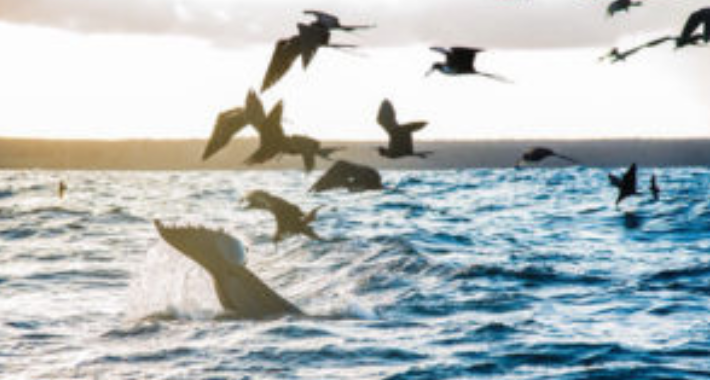
On North Seymour Island, while you wade among colonies of blue-footed boobies, beautiful frigatebirds, and swallow-tail gulls, keep an eye out for the Galapagos Great Frigatebird, which is distinguished by its vivid red breast and pointed black feathers. Some of the greatest natural marvels of the world may be found in the Galapagos Islands, but the giant frigatebird is undoubtedly at the top of the list. It visits the islands very infrequently, though, not because it doesn’t think these beautiful beaches are better than others, but rather because it flies for months at a time across the huge Pacific Ocean before making landfall. They occasionally have to descend to build their nest, though, and when they do, they put on quite the show. The best part is that there are plenty of islands and tourist destinations where you can get a good look at these amazing birds up close.
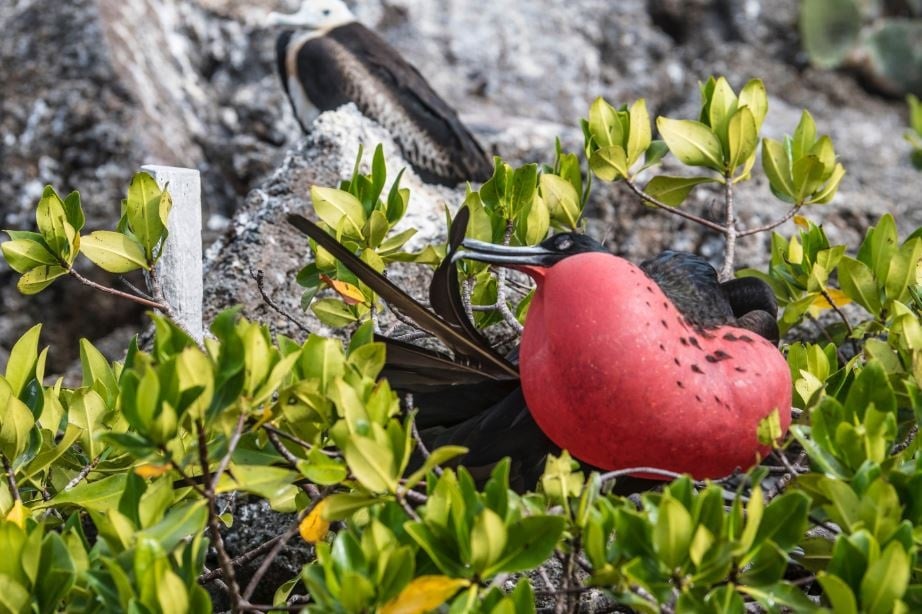
Because they frequently steal food from other birds, magnificent frigatebirds are sometimes known as “pirate birds”
See up close the Galapagos Islands’ Magnificent and Great frigatebirds!
Ahead of your Galapagos excursion, get ready!
Red balloons at the ideal time
While visiting the Galapagos Islands, there are no specialized arrangements needed to observe and witness a frigatebird colony in breeding mode. Great and magnificent frigatebirds may be spotted on North Seymour Island and Genovesa Island, respectively. Punta Pitt on San Cristobal Island is another fantastic location to observe them, if only for a quick look while exploring the striking volcanic shoreline. You will undoubtedly witness them soaring and hovering practically everywhere on your Galapagos cruise. The Magnificent frigatebird’s mating season is year-round, while the Galapagos Great frigatebird’s courtship and nesting activity is often best observed during the hot season, which runs from December to May.
Research on migration
In a recent study on the Great Frigatebird, experts from France, the United Kingdom, Canada, and Germany discovered that the bird may go up to two months without making landfall. To learn more about the migratory patterns of the birds, the researchers conducted a two-year study in which they fitted trackers on several birds. By tracking the birds and measuring their energy levels continuously, the trackers were able to gather insights into how the birds function and sleep without ever setting foot on the ground. They were also able to monitor GPS position, altitude, acceleration, and heart rate, in all directions.
The scientists discovered that the birds are far more proficient fliers than previously believed after following them during their trip. The birds they were monitoring could cover up to 250 miles in a single day, and they could reach speeds of up to 5 meters per second by perching themselves within specific updrafts. That’s how the 4,000-meter-high Galapagos Great Frigatebird gets its lift. Their ability to cover such great distances with almost any wing flapping is even more amazing.
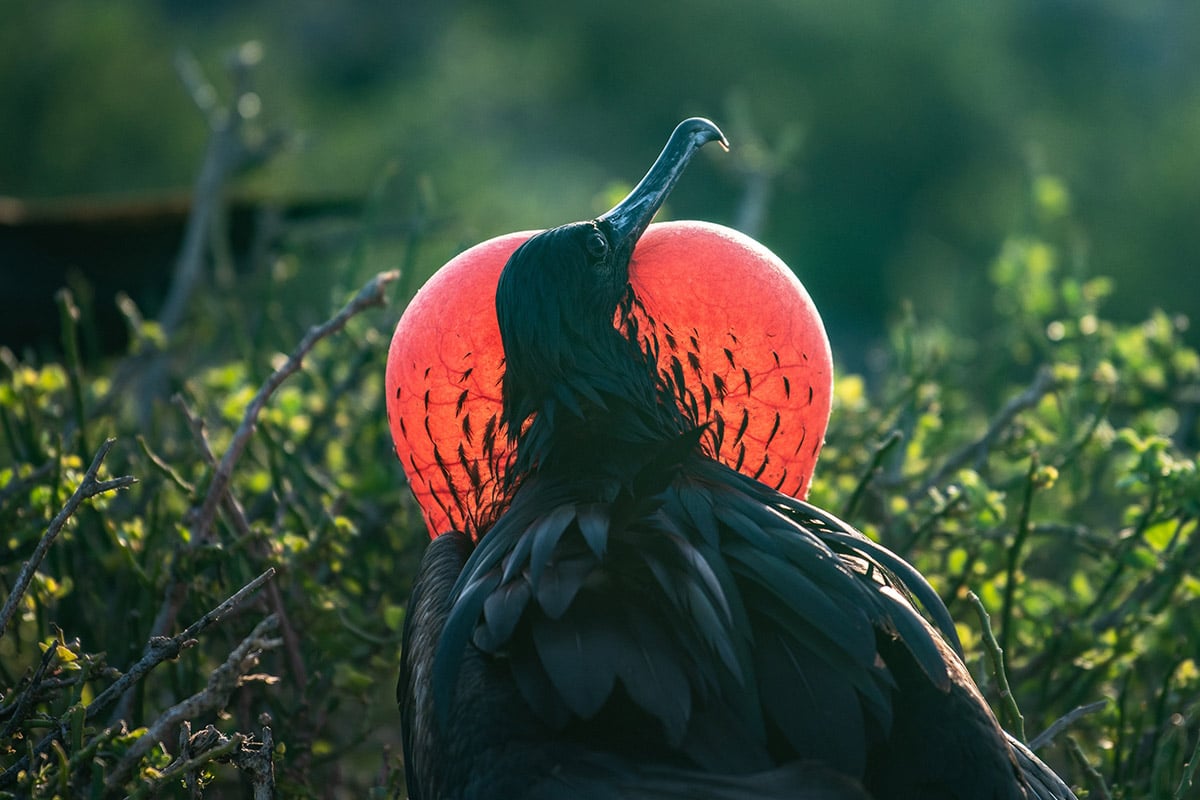
Detailed view of an impressive frigatebird
Methods of flight
The great frigatebird of the Galapagos uses a variety of strategies to fly such amazing heights and distances without succumbing to fatigue. The margins of doldrums may be tracked by great frigates, which uses this ability to monitor wind patterns as a source of propulsion to propel them forward in the air. They just need to occasionally flap their wings to improve their position inside the current once they have found themselves in one of these thermal columns of air. Additionally, they don’t need a lot of food because they are just using a little energy to achieve this. When they do dive into the water to feed, they use less energy than other marine birds since they just swoop down to catch a fish that is jumping out of the water. However, this is a strategy that is essential to their existence rather than an energy-saving one. The intriguing Galapagos birds have very little oil to keep their wings waterproof. As a result, when their feathers get wet, they become too heavy to fly and seriously risk drowning. They frequently engage in the most breathtaking acrobatic displays while in midair, attempting to annoy other birds into devouring their expensive morsels. You have to be a true master of the skies to be this nimble.
Unknown Facts About the Galapagos Great Frigatebird
The riddle behind the long-distance migration of these birds remains unsolved, despite the fact that this study has provided answers to various problems. If you are fortunate enough to witness one in the Galapagos, clumsily stumbling around on its small legs, pause to contemplate its enigmatic travels and supreme strength.
However, a number of puzzles remain regarding these birds. Their capacity to sleep in the air for several months is one of their best traits. The research indicates that the doldrums enable the birds to soar far into the clouds, allowing them to power sleep. The hypothesis that the birds can enter a deep slumber lasting only a few minutes is supported by the scientists, although it has not yet been tested. However, they must contend with bitter cold and incredibly thin air as they travel through the atmosphere hundreds of meters above the earth. The ability of the birds to withstand such high temperatures is puzzling to specialists in this case. They are not very thick in plumage, and they were definitely not designed for subfreezing weather. The study found that although the birds could raise their body temperature as a remedy, they do not.
Edited and reviewed by Francisco Dousdebés
RELATED STORIES
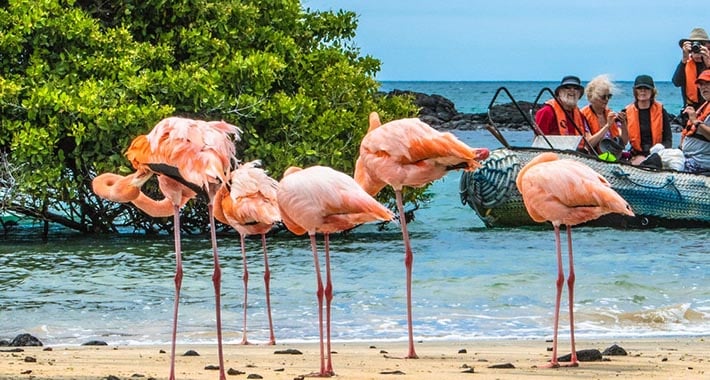
What are the best birds to see in the Galapagos?
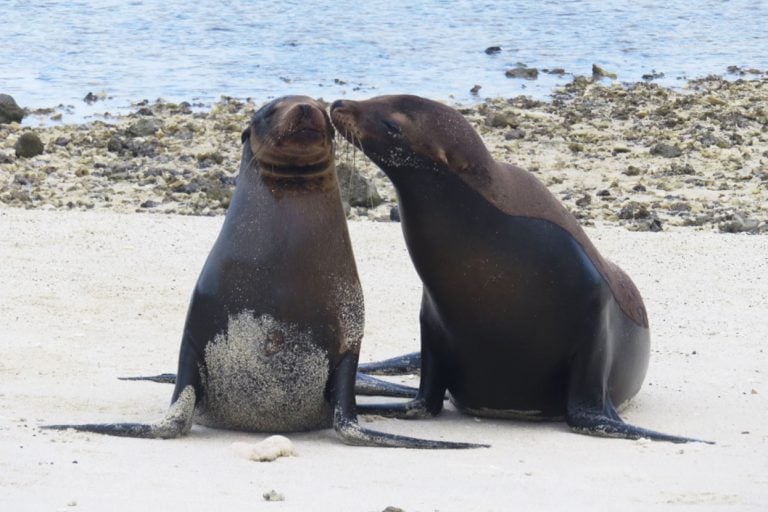
Six Stunning Ways Galapagos Island Animal Mothers Nurture Their Young

Guy Fawkes on the Galapagos Islands: Never forget the November “Finch”…

A Unique 6-Day Insular Inspiration Session with Charles Darwin on Santiago Island!
